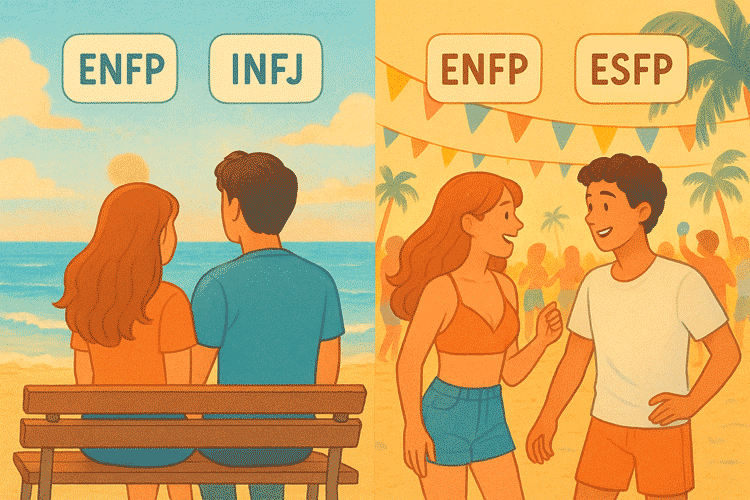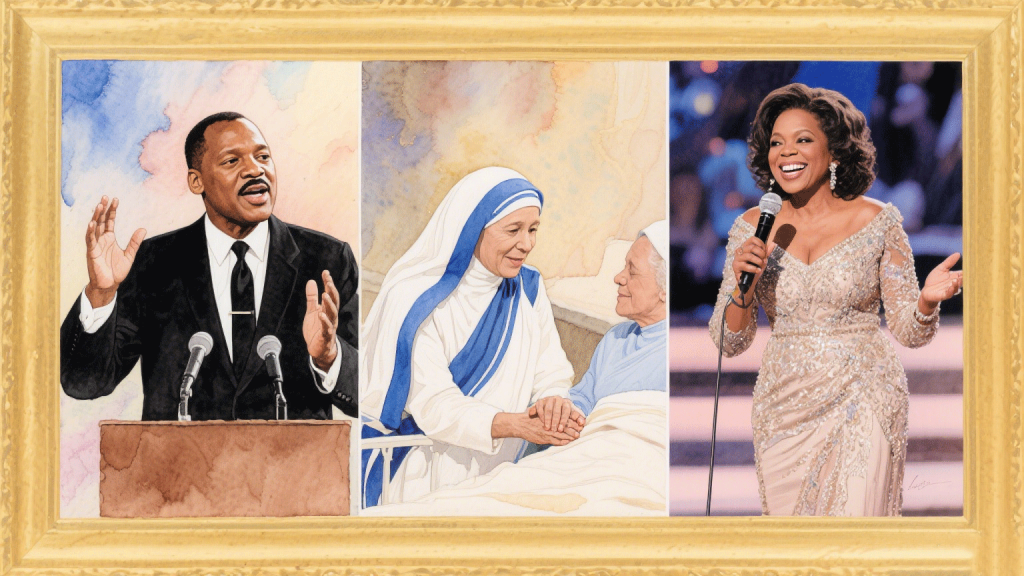The Summer I Turned Pretty: MBTI 16 Types Explained
This article uses the MBTI framework to deeply analyze the core motivations and relational dynamics of the main characters in The Summer I Turned Pretty, mapping each of the 16 types to characters and offering growth insights;
Why Use MBTI to Understand The Summer I Turned Pretty
The Summer I Turned Pretty is a story centered on youth, family, and love, but what makes it engaging is the stable “personality engines” behind its characters: how each person perceives, decides, and expresses themselves in close relationships. These patterns can be unpacked with MBTI’s four dimensions (E/I, S/N, T/F, J/P). This article uses the MBTI lens, backed by textual and behavioral evidence, to build a non-official, story-based MBTI mapping that helps you better understand the characters’ choices, conflicts, and growth points.
“Note: MBTI is a tool for understanding tendencies, not a rigid label. Characters can display stress-related shifts across seasons and contexts. All type assessments here serve only for story analysis, not real-life diagnosis.
”
Methodology
Keyword focus: This article repeatedly references The Summer I Turned Pretty for search optimization and relevance, always tying back to specific plotlines and characters. Evidence triangle: Dialogue/monologues, key turning points, and other characters’ feedback. Structure: A quick 16-type to character table, followed by detailed portraits (traits, conflicts, relationships, growth advice), and finally an interaction matrix showing the story’s relational chemistry.
Quick Mapping: MBTI Types × Characters (The Summer I Turned Pretty)
ISFP (Adventurer): Isabel “Belly” Conklin ISTP (Virtuoso): Conrad Fisher ESFP (Entertainer): Jeremiah Fisher ESTJ (Executive): Steven Conklin INFJ (Advocate): Laurel (Belly’s mother) ENFJ (Protagonist): Susannah Fisher INTJ (Architect): Adam Fisher (Conrad & Jeremiah’s father) ENTJ (Commander): Julia (Susannah’s sister) ENFP (Campaigner): Taylor Jewel ENTP (Debater): Cleveland Castillo INFP (Mediator): Cam INTP (Logician): Skye ESFJ (Consul): Shayla ESTP (Entrepreneur): Nicole Richardson ISTJ (Logistician): John Conklin (Belly’s father) ISFJ (Defender): Lucinda Jewel (Taylor’s mother)
Why These Fits: Character Deep Dives
ISFP — Belly: Feeling First, Acting Later
Belly embodies the ISFP’s strong personal values (Fi) and focus on immediate experiences (Se). She often acts from raw emotion rather than elaborate reasoning. Her growth across The Summer I Turned Pretty shows how fleeting feelings shape but also complicate her choices.
Relational tension: With ISTP Conrad, the attraction comes from deep unspoken bonds, but misaligned communication creates misunderstandings. With ESFP Jeremiah, joy and affirmation are immediate, yet long-term alignment is uncertain. Conflict trigger: Retreating inward when external pressure (family, friends, social expectations) intensifies. Growth tip: Separate “what feels like” from “what truly is.” Journaling helps clarify feelings vs. long-term values.
ISTP — Conrad: Silent Protector
Conrad’s ISTP nature surfaces in his restraint and focus on problem-solving. He suppresses emotions to address practical crises: illness, family tension, or estate conflicts.
Relational tension: Acts of care but few words cause Belly to doubt his feelings. Conflict trigger: Struggles to answer direct emotional demands like “Do you love me?” Growth tip: Translate actions into short verbal affirmations—“I stayed because you matter.”
ESFP — Jeremiah: Life of the Party
Jeremiah shines as the ESFP: open, energetic, and affectionate. He thrives on shared experiences and immediate joy.
Relational tension: Sparks fly with Belly, but sustainability is uncertain without slowing down for serious talks. Conflict trigger: Feeling ignored or not reciprocated. Growth tip: Balance fun with commitment. Create long-term plans that sustain the love story.
ESTJ — Steven: Responsible Guardian
Steven mirrors the ESTJ’s drive for order, efficiency, and protection. His role as older brother comes with control that sometimes clashes with Belly’s independence.
Relational tension: Care turns to control. Conflict trigger: Intolerance for unreliability. Growth tip: Replace “you should” with “I care.”
INFJ — Laurel: Quiet Guide
Laurel is the INFJ writer-mother archetype: reflective, empathetic, and protective. She sees beneath the surface, supporting others even at her own expense.
Relational tension: Self-sacrifice at cost of her own needs. Conflict trigger: Bottled emotions eventually erupt. Growth tip: Share vulnerabilities—let others care for you.
ENFJ — Susannah: Heart of the Family
Susannah radiates ENFJ warmth: she holds the family and friends together with empathy and harmony.
Relational tension: Neglects her own needs while prioritizing others. Conflict trigger: Preferring harmony over authenticity. Growth tip: Allow vulnerability to be seen.
INTJ — Adam: The Strategist
Adam displays INTJ traits: future-oriented, disciplined, detached. He emphasizes structure during crises but struggles with emotional presence.
Relational tension: Coldness misread as lack of care. Conflict trigger: Anxiety around uncertainty. Growth tip: Translate long-term plans into relatable language.
ENTJ — Julia: The Enforcer
Julia exemplifies ENTJ decisiveness and authority, pushing conflicts forward with clear stances.
Relational tension: Strong boundaries clash with emotional appeals. Conflict trigger: Others sidestepping rules. Growth tip: Leave space for empathy in decisions.
ENFP — Taylor: The Firecracker Friend
Taylor’s ENFP nature makes her fun, passionate, and fiercely loyal, though impulsive.
Relational tension: Risk of overstepping boundaries. Conflict trigger: Seen as meddling. Growth tip: Channel passion into consistent long-term support.
ENTP — Cleveland: The Challenger
Cleveland challenges norms and offers fresh perspectives, embodying ENTP curiosity.
Relational tension: Provocative style mistaken for antagonism. Conflict trigger: Restless with fixed answers. Growth tip: Connect emotionally before debating.
INFP — Cam: Gentle Idealist
Cam shows INFP’s kindness and strong personal values, offering respect and sincerity.
Relational tension: Doubts himself when others waver. Conflict trigger: Being compared or dismissed. Growth tip: Hold firm to self-worth.
INTP — Skye: The Analyst
Skye watches carefully, preferring internal analysis before conclusions.
Relational tension: Logic mistaken as coldness. Conflict trigger: Forced to choose sides prematurely. Growth tip: Share reasoning openly.
ESFJ — Shayla: Social Organizer
Shayla demonstrates ESFJ’s care for harmony, etiquette, and relationships.
Relational tension: Prioritizes appearances over emotions. Conflict trigger: Seen as superficial. Growth tip: Balance authenticity with social grace.
ESTP — Nicole: Bold Adventurer
Nicole embodies ESTP spontaneity: thrill-seeking, direct, and experiential.
Relational tension: Labeled reckless. Conflict trigger: Suffocated by rigid rules. Growth tip: Set personal boundaries to enjoy freedom safely.
ISTJ — John: Stable Traditionalist
John represents ISTJ reliability: duty-driven, practical, anchored in tradition.
Relational tension: Love shown through responsibility, not words. Conflict trigger: Resists fast change. Growth tip: Allow small experiments.
ISFJ — Lucinda: Gentle Protector
Lucinda is the ISFJ nurturer, quietly preserving safety and stability.
Relational tension: Over-prioritizing others. Conflict trigger: Accused of being controlling. Growth tip: Practice asking for support.
Relationship Chemistry: The Love Triangle as Type Dynamics
ISFP (Belly) × ISTP (Conrad): Deep, unspoken bonds vs. need for verbal reassurance. ISFP (Belly) × ESFP (Jeremiah): High joy and affirmation, but weak long-term alignment without structure. ISTP (Conrad) × ENFJ (Susannah): Pragmatism complemented by empathy. ESTJ (Steven) × ENFP (Taylor): Rules versus passion. Arguments become bonding.
Four Quadrants: Ensemble Dynamics
Extraverts (E): Push events forward (Jeremiah, Taylor, Susannah, etc.). Introverts (I): Provide depth and reflection (Belly, Conrad, Laurel, etc.). Sensors (S): Focus on the now. Intuitives (N): Focus on future meaning.
Together, they weave the push-pull tension of The Summer I Turned Pretty: joy versus consequence, impulse versus reflection.
Growth Roadmap
Belly (ISFP): Define values clearly to reduce regret. Conrad (ISTP): Pair actions with simple affirmations. Jeremiah (ESFP): Balance fun with commitment. Steven (ESTJ): Value presence over solutions. Laurel (INFJ): Let others care for you. Susannah (ENFJ): Acknowledge personal needs. Adam (INTJ): Share strategies in emotional language. Julia (ENTJ): Allow emotional leeway. Taylor (ENFP): Ground passion in consistency. Cleveland (ENTP): Empathize before debating. Cam (INFP): Uphold self-worth. Skye (INTP): Make reasoning visible. Shayla (ESFJ): Let authenticity show. Nicole (ESTP): Define self-chosen limits. John (ISTJ): Experiment within order. Lucinda (ISFJ): Ask for care.
Watch Checklist for Rewatching with MBTI Eyes
Who seeks words of affirmation versus action-based care? How do boundaries and commitments evolve? How do parents complement their children’s tendencies? How do values clash with efficiency?
Conclusion: Beauty Is Growth
The Summer I Turned Pretty is not only about outward beauty but about relational maturity: identifying values, honoring differences, and making wise choices for lasting love. MBTI offers a lens not to box people in, but to better appreciate the many ways we love.
Belly is most often associated with ENFP (The Campaigner). Her personality is warm, enthusiastic, and driven by deep emotions. ENFPs thrive in exploration, relationships, and finding meaning in experiences, which aligns with Belly’s journey of love, identity, and growth throughout the series.
Conrad embodies many traits of an INFJ (The Advocate) — he is introspective, emotionally complex, and often misunderstood. He prefers to process emotions privately, cares deeply for his loved ones, and tends to carry the weight of responsibility in silence. These INFJ characteristics explain why his bond with Belly feels both magnetic and challenging.
The MBTI framework highlights the different attractions Belly experiences. With Conrad (INFJ), Belly finds depth, emotional intensity, and soulful connection. With Jeremiah (ESFP), she enjoys fun, spontaneity, and an easygoing relationship. Belly’s ENFP personality naturally gravitates toward both — craving Conrad’s depth and Jeremiah’s joy — which makes the love triangle central to the drama and emotional pull of the story.
Jeremiah is typically seen as an ESFP (The Entertainer). He is outgoing, fun-loving, and thrives in social situations like parties and beach gatherings. His playful and supportive nature makes him a natural contrast to Conrad’s introverted seriousness, showing why Belly feels so comfortable and happy around him.
While MBTI analysis offers insight into personality dynamics, it cannot predict romantic outcomes with certainty. Instead, it helps explain why Belly feels drawn to both brothers: her ENFP personality values emotional depth (Conrad, INFJ) while also seeking joy and excitement (Jeremiah, ESFP). The story uses these contrasts to explore the complexities of first love and personal growth.


